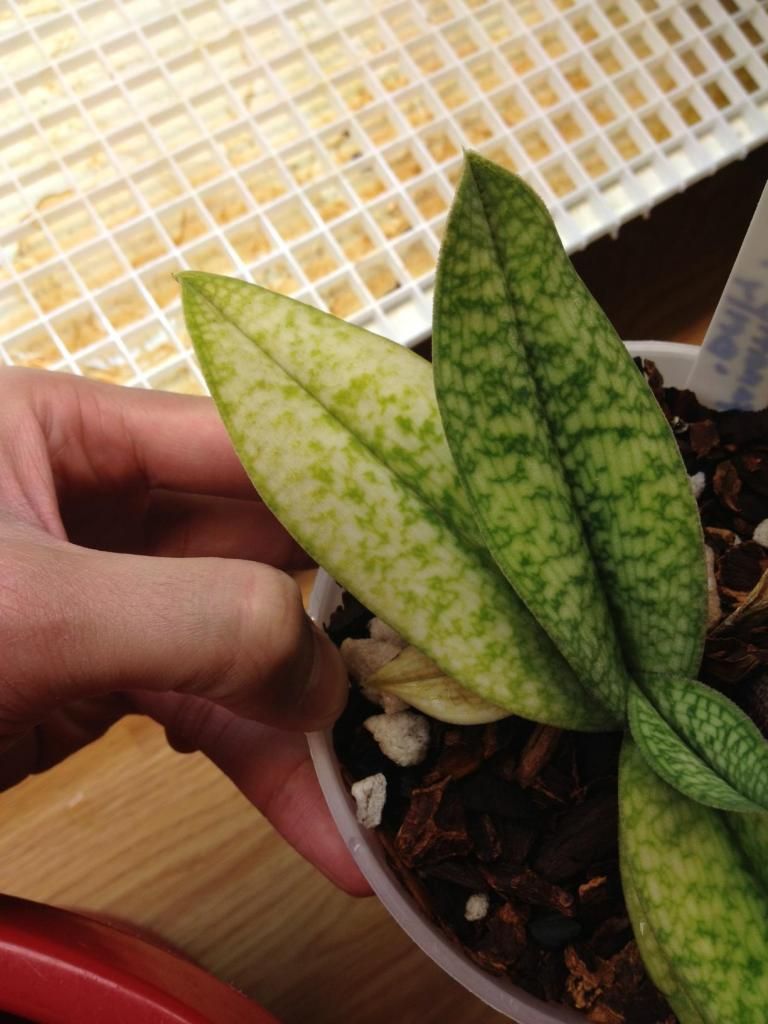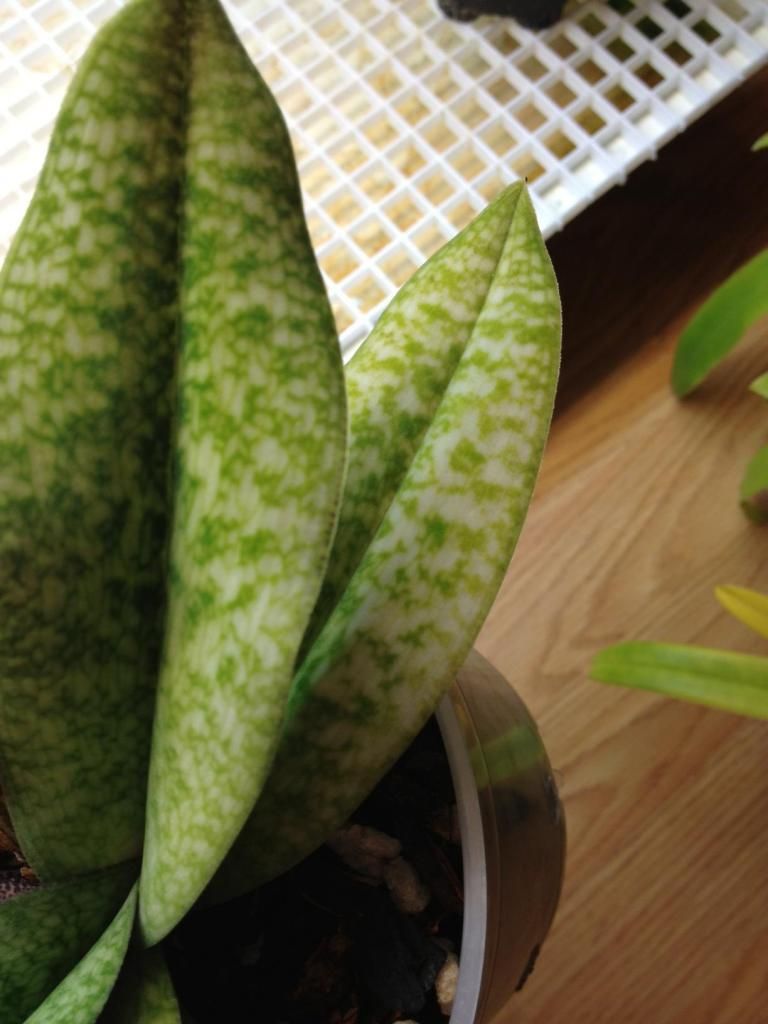I think you have done a number of things that are combining to cause the issue:
►Powders can certainly negatively affect roots, often by desiccating them.
►Excessive calcium can interfere with magnesium uptake. Powders have a lot of surface area, after all, so maybe the oyster shell powder is interfering chemically, as well as physically.
►You are underfeeding. The K-Lite formula at 1/8 tsp/gal is only supplying about 20 ppm N. That might be sufficient for daily feeding, but not likely so for a less-frequent regimen.
on other comments:
►If you leave a plant in the same bark for a very long time, as it breaks down there will ultimately become a hefty population of lignin-consuming microorganisms that consume nitrogen. Modern, attentive culture, and better quality barks pretty much preclude that.
►I think Stone's suggestion is a good "quick fix", but if you supplement with urea, use it as a foliar spray, and it's not as well absorbed through the roots.







